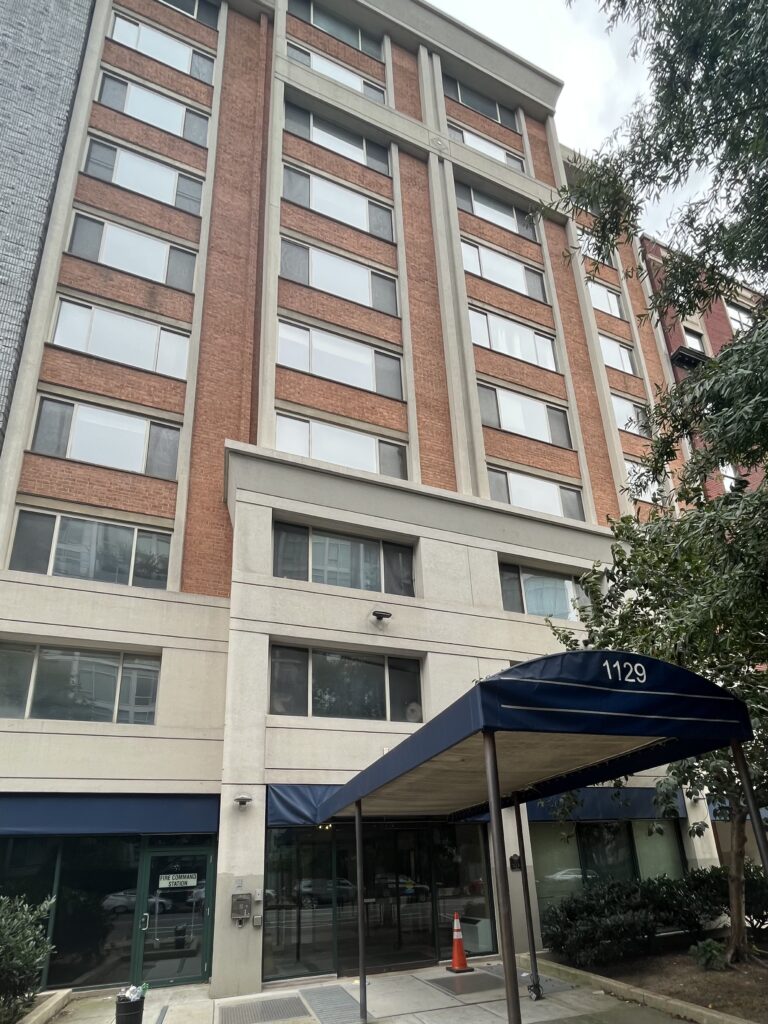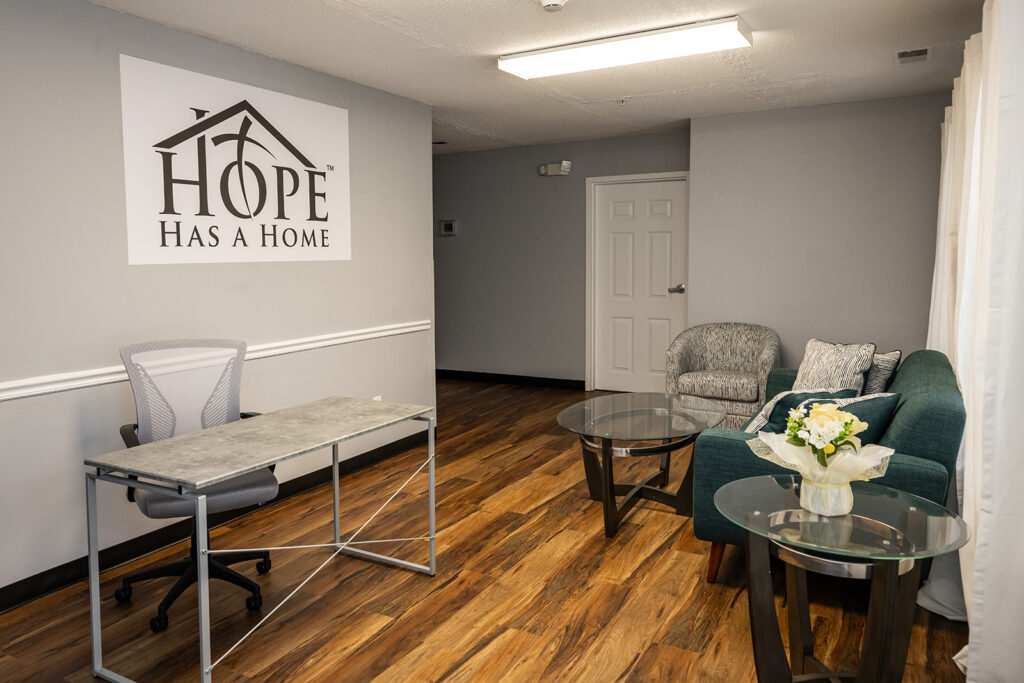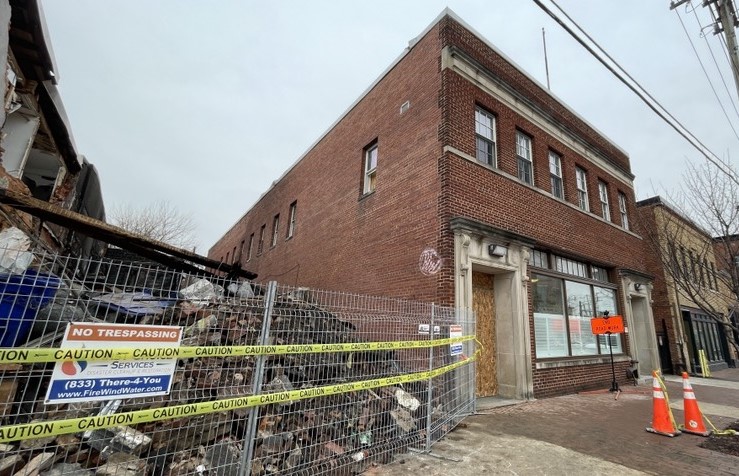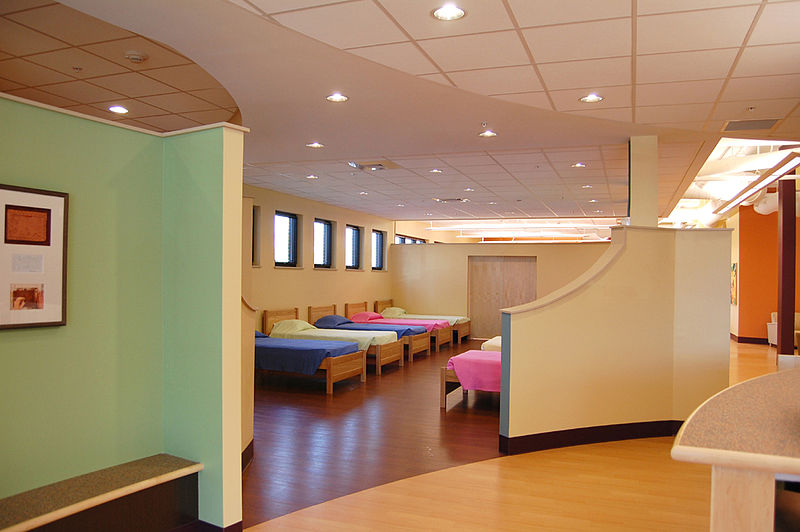D.C. is converting a former George Washington University dorm into a homeless shelter after purchasing the building in mid-August.
The shelter, which is expected to open this fall, will be the first of its kind in the District. The planned location of the shelter in the affluent Foggy Bottom neighborhood initially stirred some controversy. Though the local Advisory Neighborhood Commission (ANC) supported the District’s plan, some property owners near the shelter filed a lawsuit to prevent the sale. The lawsuit was withdrawn last month after the building was sold.
To alleviate community concerns that the shelter will negatively impact housed residents, D.C.’s Department of Human Services (DHS), which will operate the shelter, agreed to form a community advisory team to consolidate and deliver feedback to the agency from area residents. The team, once formed, will include ANC officials, members of neighborhood civic organizations, representatives from the Bowser administration and two representatives of “homeless service stakeholders.” However, internal arguments have stalled the process of forming the team, with no immediate plans to resume talks after a meeting in July devolved into arguing amongst the ANC.
The facility in Foggy Bottom will be the first non-congregate shelter dedicated to adult families and chronically ill people whose needs aren’t addressed in other shelters.
Generally, adults going into shelters are segregated into male and female facilities, which can separate couples or parents with adult children. At the Aston, however, these families will be allowed to stay together. Each person will also share a room with only one other person, unlike in D.C.’s other singles shelters, where dozens of people may sleep in the same room, which some people experiencing homelessness say makes them feel unsafe. The District hopes the design of the shelter will encourage people who have avoided shelters until now to move inside
The Aston will also offer consistent medical services that are essential for people managing chronic conditions, a resource that is not common at other shelters in D.C. The COVID-era shelters targeted at a similar medically vulnerable population are set to close this fall.
As the city presses forward with its plans to build the shelter and solicit community feedback, area residents with direct experience with homelessness are thinking about what D.C. could do to ensure the new shelter is successful. Street Sense caught up with a few to ask them about the situation.
Frederic John
Walking through the neighborhood he now lives in, Frederic John can see the window his mother peered out of after she gave birth to him in what used to be the Columbia Hospital (it’s now an apartment complex). While John found housing more than a decade ago, he also spent some of the time he was homeless in Foggy Bottom.
John says that having a shelter in Foggy Bottom will help alleviate tensions in the neighborhood and amongst unhoused people in the area. He is excited about the prospect of having a shelter dedicated to the medically vulnerable unhoused community. He pointed out that everyone will feel safer without having to roam around trying to have their medical needs addressed. A study by the National Healthcare for the Homeless Council found that in some cities, over 50% of deaths amongst the unhoused population were unsheltered at the time of death. Health conditions that require medication can also be deadly if untreated for people experiencing homelessness. In New York City, for example, cardiovascular disease made up 28% of deaths, according to the study.
But John emphasized that meaningful health care goes beyond providing a person with medication, “They might be given a pill but they are not getting any long-term benefits from these programs,” he said.
John says that shelters need to be places where people can gain a sense of dignity through interacting with well-trained, kind staff and programs that emphasize addressing essential needs.
Starting in October 2022, “homelessness status” is protected under The Human Rights Enhancement Act, barring discrimination by potential employers, housing, educational institutions or governmental services.
For John, a sense of equality and dignity can start in a mundane place. “A long, long time ago, I was going to a couple of shelters and it was miserable, you know, that was just basically just shoved this evening and shoved out in the morning, I couldn’t even eat a sandwich from there.” He thinks real dignity can start there, with food. “I think there are medicinal qualities to eating some food,” he said, “Just the act of making breakfast really helps all your processes.”
He also thinks having a well-trained staff is essential, “We should have people who are trying to help assuage the residents that they’ll be looked after. And if they have problems, they can go to somebody and let them know it’s bothering them,” he said.
He points to Miriam’s Kitchen, a homeless service provider in Foggy Bottom, as a good example of what good food and services can do for a community but says that they can’t do everything to get people back on their feet.
There are other resources in the area that Aston residents will be able to access. ANC 2A01 Commissioner Yannik Omictin said in an interview that Foggy Bottom is ideally situated for a shelter, with its abundant grocery stores, library, easy access to public transportation, and proximity to medical facilities. “All of that should be accessible to all people of D.C., not just to the people who can afford to buy property in the West End,” Omictin said.
Jet Flegette
While some business owners and residents are concerned about the shelter’s impact on the overall safety of the neighborhood, Jet Flegette is concerned about the safety of those who will eventually live in the shelter. When Flegette stayed in shelters in and around Foggy Bottom, she said she often felt disrespected and was even physically threatened on several occasions. “That’s what I don’t want to see [in a shelter], a bully,” Flegette said. “I’ve seen it too many times.” For Flegette, disrespectful staff and harsh punishments in shelters can quickly make places that are supposed to feel like sanctuaries feel like more prisons.
She cautioned future members of the community advisory team that big openings and beautiful ribbon cuttings mean nothing if a shelter has a staff that isn’t prepared to work with and respect its residents. “The ribbon cutting is always so nice… it’s a beautiful shot and it looks beautiful outside but it’s about the people that run it.”
Flegette acknowledged shelter staff must have the authority to handle difficult situations including mental health crises. But they have to be able to discern which residents need that kind of intervention. “People entering the shelter are not okay, especially because you’ll get some crazy dude and a woman with a knife,” she said. “You got to know when to, you know, take action in that type of situation… If [a resident is] following the rules and doing her thing… there is no reason to be a bully,” she said.
In building the new shelter, Flegette emphasized the need for planners to empower residents by giving them more than just a space to sleep for the night.
“Yeah, [a shelter] is a place to stay, to lay your head, but the object is to figure out your plan,” she said. The city has a goal that residents will stay at the Aston for three to five months.
Flegette says that prolonged debates about who should serve on the community advisory team detract from the bigger picture — how to solve homelessness — and only work to further disenfranchise unhoused citizens, who already have low trust in their local leaders. She wished the focus was on selecting people to represent unhoused people in the endless debates, “[There need to be] someone that has actually experienced homelessness, they should be a part of that somehow. Because these regular folks that have never experienced such a thing,” she said.
Robert Warren
Robert Warren has long worked to advocate for the rights of people experiencing homelessness, He has worked with Miriam’s Kitchen for 15 years and helped found the People for Fairness Coalition, a group of advocates with lived experience of homelessness.
He said running a successful shelter is all about the process. Warren wants the community advisory team and DHS to focus on actively working with residents to ensure that the shelter serves as a stepping stone to their own home and future. “We need to stop relegating people to poverty,” he said.
Specifically, Warren says shelters like the one planned at the Aston should consider addressing holistic wellness. He wants to see assistance for shelter residents every step of the way from health and recovery, to workshops, to a robust support staff, and making sure that residents are well versed in services such as the client assistance program, which will familiarize them with what benefits they’re entitled to. He believes it shouldn’t take much longer than 90 days to get people started on recovery.
Above all, Warren hopes that he sees equity centered at the new shelter. He says too often he sees long-term Black residents overlooked for programs. “I don’t want a guy from West Virginia to live and die on the streets. But long-term Black residents have been doing that for years,” he explained.
He believes that those who have experienced being unhoused need to have their voices prioritized as the construction of the shelter goes forward. “We have a saying, ‘Nothing about us, without us,’” he said.








